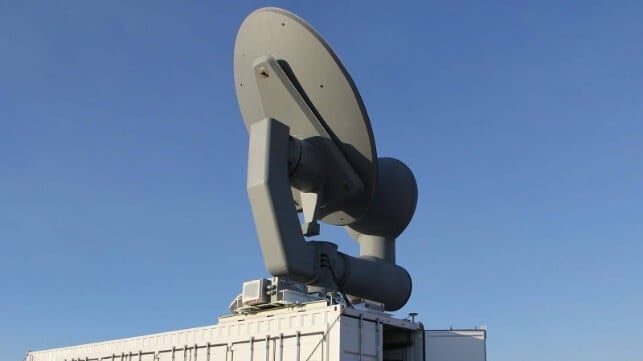Report: CIA Has a "Nonviolent" System That Can Disable Ships

The U.S. Central Intelligence Agency has a nonlethal device that can disable ships, national security sources told Wired Magazine for a new story on covert operations in Venezuela.
In 2019, a unifying opposition leader - Juan Guaido - came to prominence in Venezuelan politics. The Trump administration's national security advisors believed that Guaido might be able to unseat longtime dictator Nicolas Maduro, whose policies had devastated the Venezuelan economy and set off a mass migration crisis.
To give Guaido a boost, White House officials - led by then-National Security Advisor John Bolton, according to Wired - began pushing the CIA to carry out various covert methods to undermine the Maduro regime. Among other possibilities, they contemplated a U.S.-sponsored paramilitary attack on Venezuelan warplanes (partly successful) and a cyberattack on the Venezuelan military's payroll system (successful).
Other potential covert actions never made it past the CIA's decisionmaking process, officials told Wired, and Guaido's bid for power ultimately failed. Bolton expressed frustration that the spy agency refused to carry out Cold War-style regime change operations in Latin America, and told the magazine that the CIA has grown too risk-averse to use its full capabilities.
One idea that never made it past the drawing board was a proposal to deploy a secret ship-disabling device against tankers on the Venezuela-to-Cuba route. The objective was to reduce oil revenue for the Venezuelan regime while simultaneously depriving Cuba's government of its oil supply.
The device in question "could covertly (and nonviolently) disable ships," according to Wired. The CIA only had one of these devices in its possession, and it was located in another hemisphere; the agency did not want to move the device to Latin America, so the idea died.
The exact nature and capabilities of the device are unclear, but could align with a high-power microwave weapons system, noted defense outlet The War Zone. The U.S. Navy's Office of Naval Research and the Air Force Research Laboratory have worked on one possible candidate: the High Power Joint Electromagnetic Non-Kinetic Strike (HIJENKS) program.
High-power microwave weapons are essentially powerful radio transmitters, with enough wattage to induce a current in electronic circuitry from a distance. According to a Navy report on HIJENKS, HPM weapons can disrupt or damage electronics if it is in range of a device's antenna (like a radar or a VHF aerial), an exposed cable. Even if there is a small aperature in an exterior structure (like a crack or seam), an HPM may be able to penetrate inside with enough remaining strength to cause disruption to electronics.

that matters most
Get the latest maritime news delivered to your inbox daily.
The Navy and Air Force carried out testing on HIJENKS at the China Lake Test Range in 2022, and the trials were apparently successful. "The HIJENKS Program provides non-kinetic strike options for missions where electronic target disruption or defeat is advantageous to mission objectives. The program includes advancements in lethality modeling, power electronics, HPM source, conformal antennas, and energy storage," the unclassified post-test summary concluded.
Raytheon has begun testing a shipping container-sized device with comparable microwave capabilities, but purpose-built to destroy the guidance systems in incoming drones and missiles. The DEFEND (Directed Energy Front-Line Electromagnetic Neutralization and Defeat) system is in prototype trials with the U.S. Air Force Research Laboratory and the Naval Surface Warfare Center Dahlgren Division, according to Raytheon. Multiple other devices built by startups and major defense contractors are also in testing and development.
